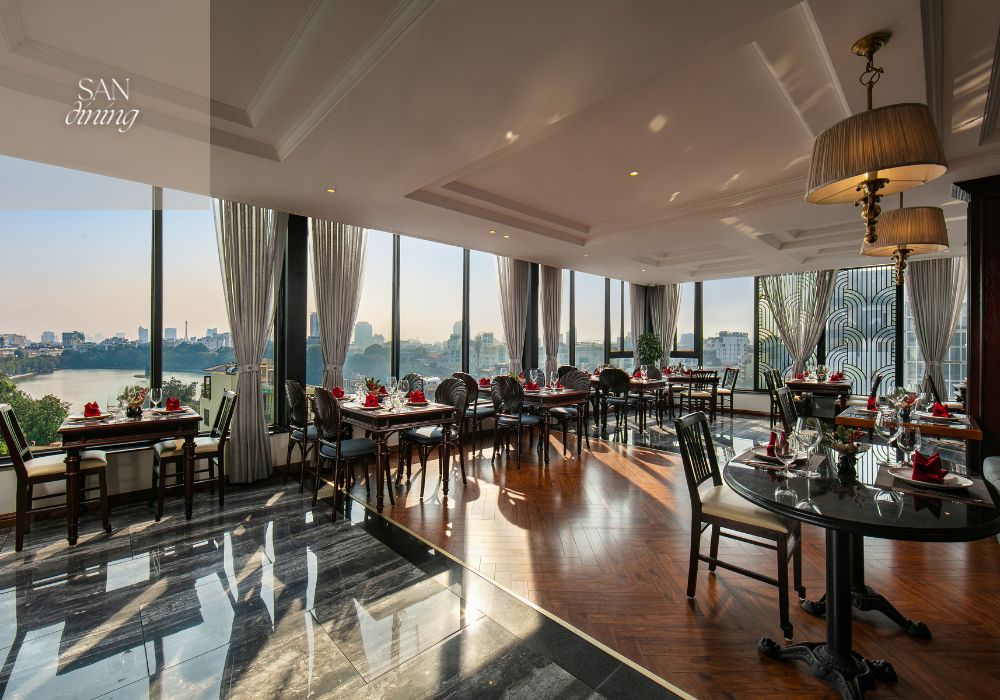Savor Authentic Eastern Cuisine With a Pan-Asian Twist for a Culinary Experience
Starting a culinary trip via genuine Oriental food, boosted with a Pan-Asian spin, supplies an one-of-a-kind opportunity to check out the abundant tapestry of tastes that specify the area's varied cooking customs. This experience welcomes you to savor the elegant equilibrium of tastes-- pleasant, salted, spicy, and sour-- harmonized by aromatic natural herbs and flavors. Envision the cutting-edge combination of Thai curry and ramen or the unexpected delight of sushi burritos. As you contemplate these tempting dishes, take into consideration the social narratives and historical impacts that shape them, each bite using a story waiting to be uncovered.

Discovering Pan-Asian Tastes
In the realm of international gastronomy, Pan-Asian cuisine attracts attention for its impressive diversity and the unified interplay of flavors from various Oriental cultures. This culinary strategy celebrates the abundant practices and one-of-a-kind ingredients discovered across the continent, creating a tapestry of tastes that is both interesting and rewarding. Key to Pan-Asian cuisine is its capability to balance contrasting tastes-- pleasant, salty, spicy, and sour-- while highlighting the freshness and top quality of each ingredient.
From the umami-rich soy sauce of Japan to the fiery chili peppers of Thailand, Pan-Asian food offers a considerable palette of tastes. These components are often combined in innovative methods, enhancing meals with layers of intricacy. As an example, making use of fragrant herbs such as lemongrass and cilantro, typical in Vietnamese and Thai food, includes a rejuvenating illumination to dishes, while the consolidation of coconut milk delivers a luscious, abundant structure.
The focus on fresh fruit and vegetables and aromatic seasonings ensures that each meal is not only a banquet for the palate but likewise for the senses. Pan-Asian food invites diners to start a culinary journey, discovering the vast and differed landscapes of Eastern gastronomy with every bite.
Blend Dishes to Try
While Pan-Asian cuisine is celebrated for its standard flavors, the modern culinary landscape is progressively welcoming fusion recipes that blend these traditional components with impacts from various other regions. This innovative strategy not only honors the abundant heritage of Eastern culinary arts yet also presents novel preference experiences that appeal to modern palates.
An archetype of such a combination recipe is the Korean-Mexican taco, where marinaded bulgogi beef is wrapped in a cozy tortilla, topped with kimchi and a zesty gochujang-infused salsa. This combination marries the strong, full-flavored flavors of Korea with the vivid, fresh elements of Mexican cuisine. In a similar way, sushi burritos have actually obtained appeal, integrating the fragile creativity of Japanese sushi with the passionate, hand-held ease of a burrito, frequently including combination active ingredients like tempura shrimp and avocado with a drizzle of wasabi mayo.
One more noteworthy dish is Thai curry ramen, which infuses the creamy, fragrant seasonings of Thai curry right into the soothing brew of conventional Japanese ramen, developing a harmonious blend that entices the senses. These blend dishes expand past simple novelty; they represent a culinary dialogue between societies, urging expedition and advancement on the planet of Pan-Asian food.
Crucial Ingredients and Flavors
To truly appreciate Pan-Asian cuisine, one need to understand the crucial ingredients and flavors that develop its structure. This diverse culinary style draws from a rich tapestry of Asian customs, using an unified mix of textures and flavors. Key active ingredients include soy sauce, fish sauce, and oyster sauce, which impart a savory umami depth vital to Oriental dishes. Corresponding to these are rice vinegar and mirin, providing a fragile level of acidity and sweetness.
Aromatic elements are essential, with ginger, lemongrass, and garlic being ubiquitous throughout different Pan-Asian recipes. These active ingredients provide a fragrant base that improves the complexity of flavors. Seasonings such as star anise, cardamom, and cinnamon present warmth and character, resembling impacts from areas like China and India.

Food Preparation Techniques and Tips
Mastering the art of Pan-Asian cuisine needs you could try this out knowledge with its distinctive food preparation strategies, each contributing to the dynamic tapestry of flavors this culinary custom is celebrated for. Central to these techniques is the stir-fry, a rapid food visit here preparation method that preserves the dietary stability and vivid colors of active ingredients. Utilizing a frying pan, the stir-fry technique enables also warm distribution, important for accomplishing the particular texture and taste balance of Pan-Asian dishes.
One more essential method is steaming, especially prevalent in Chinese cuisine. This gentle technique maintains the natural flavors and nutrients of ingredients, making it ideal for fish and shellfish and vegetables. Dumplings, a cherished staple, commonly take advantage of steaming, causing soft, delicious textures.
Grilling, also important, presents great smoky midsts to recipes such as Oriental bulgogi or Japanese yakitori (best asian restaurant Islamabad). This strategy often involves marinading active ingredients, permitting flavors to pass through deeply before cooking over an open flame or warmer
Finally, understanding the art of balancing flavors-- sweet, sour, salted, bitter, and umami-- is important. Correctly layering these elements can raise a recipe from average to amazing, providing a complex and pleasing culinary experience that embodies the significance of Pan-Asian food.
Eating Experiences Worldwide
Around the world, Pan-Asian food provides an unrivaled dining experience, commemorated for its rich tapestry of tastes and vibrant discussions. This cooking sensation has gone beyond cultural boundaries, recording the hearts and palates of food fanatics worldwide. In cosmopolitan cities fresh York, London, and Sydney, Pan-Asian restaurants act as melting pots where cooking traditions from Thailand, Japan, China, and beyond assemble, providing diners with a diverse mix of meals that highlight the region's diversity.
The global allure of Pan-Asian cuisine lies in its ability to supply both credibility and development. Chefs masterfully marry conventional active ingredients such as lemongrass, soy sauce, and miso with modern strategies, resulting in recipes that are both familiar and refreshingly new. This fusion enables restaurants to get started on a cooking journey that appreciates heritage while accepting modernity.
In addition, eating experiences are boosted via thoughtfully developed environments that reflect the ethos of Pan-Asian aesthetics. From minimalist Japanese-inspired interiors to dynamic Thai-themed spaces, each restaurant offers a distinct ambiance that complements the cooking offerings. Consequently, clients are not just eating a official statement meal but partaking in a cultural experience, making Pan-Asian eating a genuinely global phenomenon.
Verdict
The exploration of Pan-Asian cuisine offers a profound understanding of the elaborate interplay of flavors and culinary traditions throughout Asia. By accepting combination dishes such as Thai curry ramen and sushi burritos, the cooking trip not just highlights the flexibility of standard active ingredients yet likewise showcases innovative modern-day techniques. This gastronomic experience, improved by cooking methods and essential seasonings, offers an unique possibility to appreciate the multiculturalism and cooking creativity that specify Pan-Asian food on a worldwide scale.
Getting started on a culinary trip via authentic Eastern cuisine, boosted with a Pan-Asian twist, offers a special opportunity to check out the abundant tapestry of flavors that define the region's diverse cooking practices.In the realm of global gastronomy, Pan-Asian cuisine stands out for its remarkable variety and the unified interplay of tastes from various Eastern societies. Secret to Pan-Asian food is its ability to stabilize different flavors-- sweet, salty, spicy, and sour-- while highlighting the quality and quality of each component.

Comments on “Instagrammable Restaurants Islamabad: Picture-Perfect Dining Experiences”